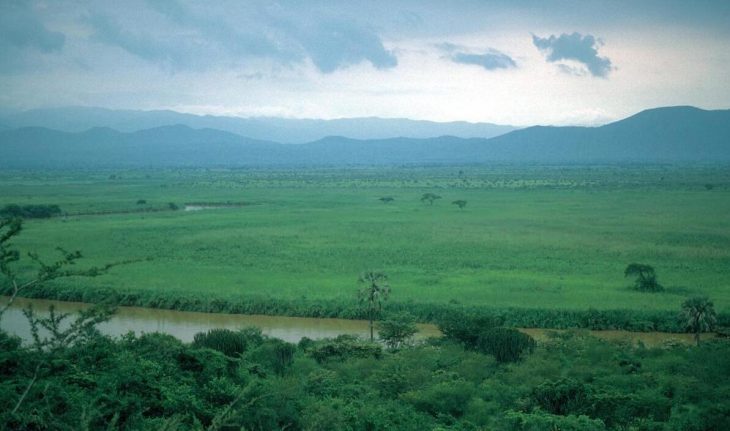Burundi Population

Burundi is one of Africa’s most densely populated countries. It is characterized economically and socially by the conflict between Tutsis and Hutus.
Key figures and facts
- Capital: Bujumbura
- Ethnic groups: Hutu 85%, Tutsi 14%, Two 1%
- Language: Kirundi (official), French (official), English (official), Swahili,
- Religion: Roman Catholic 62.1%, Protestants 23.9%, Muslims 2.5%, others 11.5% (2008)
- Population: 10 864 000 (2017)
- Control Form: Republic
- Area: 27 830 km2
- Currency: dollar
- GNP per capita: 778 PPP $
- National Day: July 1st
Burundi Population
The population is estimated at 6.2 million (2004), and annual population growth to approximately 2.2%. Birth and death rates are high, at 43.1 and 22.2 ‰, respectively, on an annual average (1995–2000). The average life expectancy has decreased in recent years, and in 2002 was 43 years for women and 40.8 years for men. The decline in life expectancy is due to, among other things, HIV/AIDS virus; just over 8% of the population between the ages of 15 and 49 is affected.

Diseases such as malaria, measles and flu pose serious health problems, and in addition comes the spread of AIDS, which has increased very rapidly. The poor living conditions, partly due to high population density and the resulting soil shortages, have been catastrophically aggravated by civil war, with massacres, refugee flows and food shortages.
There are three main ethnic groups. The Hutu, the agricultural population, counts approximately 85% of the population. Tutsis, which are traditionally cattle farmers, make up approximately 14% of the population, while just under 1% are pygmoid two-people. Contradictions between Hutus and Tutsis are a dominant feature of the country’s modern history.
The average population density is 223.8 people per km², and the country is one of Africa’s most densely populated countries. The vast majority of the population live in rural areas. Major cities are the capital Bujumbura and Gitega.
Population of Burundi by Year (Historical)
| Year | Population | Annual Growth Rate | Population Density | Global Rank |
| 2020 | 11,890,673 | 3.120% | 463.0368 | 78 |
| 2019 | 11,530,469 | 3.180% | 449.0101 | 80 |
| 2018 | 11,175,263 | 3.220% | 435.1781 | 82 |
| 2017 | 10,826,908 | 3.230% | 421.6129 | 84 |
| 2016 | 10,487,884 | 3.230% | 408.4110 | 86 |
| 2015 | 10,159,919 | 3.210% | 395.6398 | 88 |
| 2010 | 8,675,491 | 3.330% | 337.8350 | 93 |
| 2005 | 7,364,751 | 2.920% | 286.7937 | 97 |
| 2000 | 6,378,760 | 1.280% | 248.3984 | 97 |
| 1995 | 5,986,932 | 1.940% | 233.1403 | 94 |
| 1990 | 5,438,846 | 2.740% | 211.7974 | 96 |
| 1985 | 4,750,726 | 2.710% | 185.0014 | 101 |
| 1980 | 4,157,187 | 2.350% | 161.8886 | 103 |
| 1975 | 3,700,769 | 1.240% | 144.1153 | 105 |
| 1970 | 3,478,963 | 2.370% | 135.4780 | 104 |
| 1965 | 3,094,268 | 2.040% | 120.4976 | 104 |
| 1960 | 2,797,821 | 1.980% | 108.9537 | 103 |
| 1955 | 2,537,046 | 1.900% | 98.7990 | 103 |
| 1950 | 2,308,809 | 0.000% | 89.9112 | 103 |
Major Cities in Burundi by Population
| Rank | City | Population |
| 1 | Bujumbura | 331,589 |
| 2 | Muyinga | 70,965 |
| 3 | Ruyigi | 38,347 |
| 4 | Gitega | 23,056 |
| 5 | Ngozi | 21,395 |
| 6 | Rutana | 20,782 |
| 7 | Bururi | 19,629 |
| 8 | Makamba | 19,531 |
| 9 | Kayanza | 19,332 |
| 10 | Muramvya | 17,930 |
| 11 | Cibitoke | 14,109 |
| 12 | Bubanza | 12,617 |
| 13 | Karuzi | 10,594 |
| 14 | Cankuzo | 6,474 |
| 15 | Kirundo | 5,972 |
| 16 | Rumonge | 5,963 |
| 17 | Mwaro | 4,813 |
Religion
About 80% of the population is Christian, a majority of whom belong to the Roman Catholic Church. Burundi has one archbishop and three bishops. The Anglican Church is headquartered in Uganda. About 1.6% are Muslims; the rest of the population is associated with various traditional local religions.
Language
Kirundi (rundi) and French are official languages, but Swahili is also used to some extent as a trade language.













































